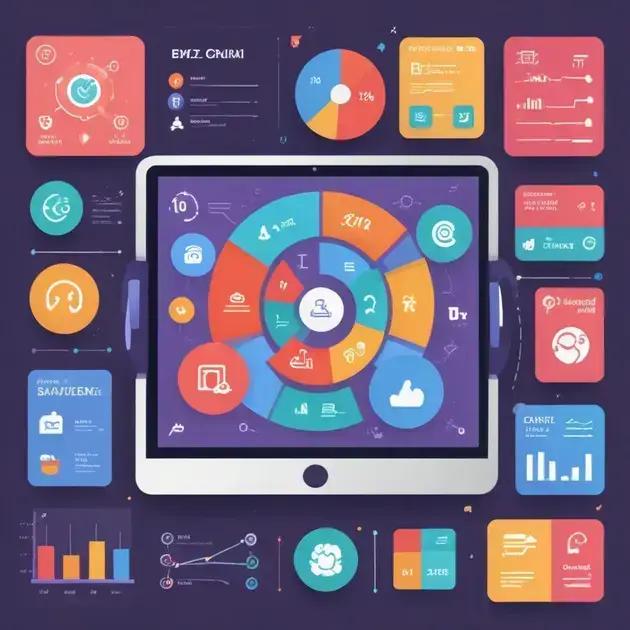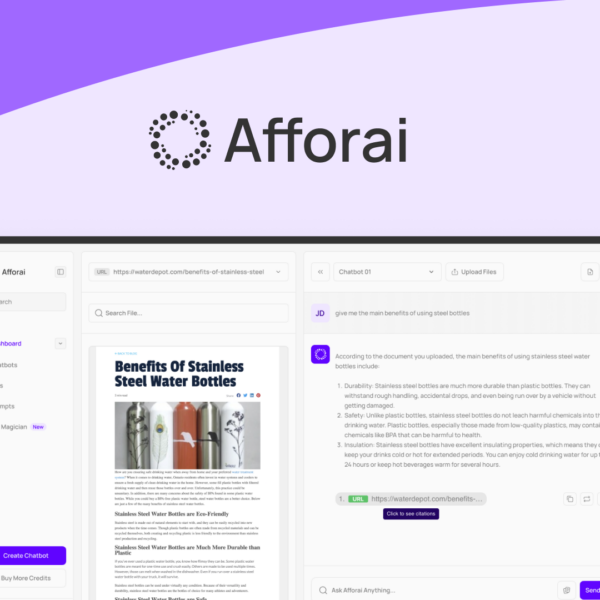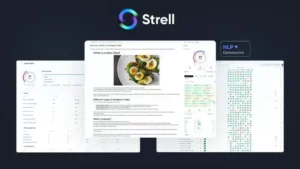Highlevel software is an all-in-one platform designed to enhance business efficiency through features like CRM, email marketing, and workflow automation. By streamlining operations and improving customer engagement, it can significantly drive growth for businesses of all sizes.
Highlevel software is revolutionizing the way businesses manage their operations. With the rise of digital tools, managing everything from marketing to customer relationships can be streamlined like never before. In this article, we’ll unpack the essentials of what highlevel software is, dive into its key features, and discover how it can boost your business efficiency.
What is Highlevel Software?
Highlevel software is an all-in-one platform designed to streamline various business operations. It integrates marketing, sales, and customer relationship management tools into one cohesive system. This means businesses can manage their tasks more efficiently without juggling multiple applications.
Understanding the Core Features
The software includes features like CRM, email marketing, landing page creation, and automation tools. These features help businesses save time and resources while enhancing their engagement with customers.
The Importance of Highlevel Software
In today’s digital landscape, utilizing highlevel software empowers businesses to maintain competitive advantages. Companies that adopt this technology can effectively track customer interactions, automate campaigns, and boost sales effortlessly.
Who Should Use Highlevel Software?
Highlevel software is ideal for small to medium-sized businesses looking for comprehensive solutions to complex needs. Marketing agencies, real estate companies, and e-commerce stores, in particular, find this tool beneficial in managing client relationships and operations.
Key Features of Highlevel Software

The key features of Highlevel software make it a powerful tool for businesses. Each feature is designed to enhance efficiency and streamline processes.
Customer Relationship Management (CRM)
This feature allows businesses to manage client interactions, track leads, and nurture customer relationships. A robust CRM system ensures that every customer touchpoint is recorded and analyzed.
Email Marketing Tools
Highlevel software includes advanced email marketing functionalities. With these tools, businesses can create and send targeted email campaigns, track open rates, and generate valuable insights from their marketing efforts.
Funnel Builder
The built-in funnel builder lets users design and optimize sales funnels. By guiding potential customers through a seamless journey, businesses can increase conversion rates and maximize sales.
Workflow Automation
Automating tasks is a significant advantage of Highlevel software. This allows businesses to set up workflows that trigger actions based on customer behavior, saving time and reducing manual efforts.
Reporting and Analytics
Highlevel software provides detailed analytics and reporting options. Users can track key performance indicators, analyze data trends, and make informed decisions for future strategies.
Benefits of Using Highlevel Software
Using Highlevel software offers several benefits that can enhance your business operations significantly. By integrating multiple functions into one platform, businesses gain efficiency and effectiveness.
Improved Efficiency
Highlevel software automates routine tasks, allowing teams to focus on more important activities. From email campaigns to lead tracking, automation saves time and reduces errors.
Cost Savings
Instead of purchasing individual tools for CRM, email marketing, and analytics, businesses can rely on Highlevel software as a comprehensive solution. This consolidation can lead to substantial cost reductions in software subscriptions.
Better Customer Engagement
The integrated communication features enable businesses to interact with customers through various channels, enhancing the overall customer experience. This helps build stronger relationships and increases customer loyalty.
Centralized Data Management
With all customer information and interactions stored in one place, Highlevel software provides businesses with easy access to data. This centralized data management leads to better insights and informed decision-making.
Scalability
Highlevel software is designed to grow with your business. Whether you’re expanding your services or entering new markets, this software can adapt and accommodate your changing needs without significant additional costs.
How to Implement Highlevel Software Effectively

Implementing Highlevel software effectively requires a thoughtful approach. Here are key steps to ensure successful integration into your business.
Assess Your Business Needs
Begin by evaluating your current processes and identifying areas where Highlevel software can provide the most value. This might involve consulting with team members to understand their pain points and operational bottlenecks.
Create a Clear Implementation Plan
Develop a structured plan outlining the stages of implementation. This plan should include timelines, resource allocation, and specific goals to achieve during the integration process.
Train Your Team
Effective training is essential for maximizing the benefits of Highlevel software. Organize training sessions and provide resources that help team members become proficient in using the new platform.
Start with a Pilot Project
Consider launching a small pilot project before a full-scale rollout. This allows you to test the software with a limited scope, identify challenges, and refine your processes before expanding it across your organization.
Monitor and Optimize
After implementation, regularly monitor the performance of Highlevel software. Encourage feedback from users and make adjustments as necessary to optimize its use and productivity.
Common Challenges with Highlevel Software
While Highlevel software can greatly enhance business operations, there are common challenges that users may face during and after implementation.
Learning Curve
One of the initial obstacles is the learning curve associated with the software. Users might find it challenging to adapt to the new interface and functionalities. Training sessions are crucial to help staff become comfortable with the platform.
Integration Issues
Integrating Highlevel software with existing tools and systems can sometimes lead to complications. Businesses should plan for potential integration issues, ensuring that data flows seamlessly between different applications.
Data Migration
Transferring data from old systems to Highlevel software is often a complex task. Ensuring that all data is accurately migrated without loss or corruption is vital and may require professional assistance.
Ongoing Maintenance
Highlevel software requires regular updates and maintenance. Keeping the system updated can be challenging and necessitates dedicated resources to manage effectively.
Customer Support Access
Accessing timely customer support is essential when issues arise. Users may experience delays or difficulty reaching support, which can hinder operations if problems are not resolved quickly.
In Summary: Unlocking the Potential of Highlevel Software
Highlevel software offers many advantages for businesses, from improved efficiency to better customer engagement. However, implementation comes with challenges like a learning curve and integration issues.
By assessing your needs, training your team, and starting with a pilot project, you can maximize the benefits of this powerful tool. Regular monitoring and optimization will ensure that Highlevel software meets your evolving business demands.
Embracing Highlevel software can truly transform your operations, allowing you to innovate and grow in today’s competitive market.
FAQ – Frequently Asked Questions about Highlevel Software
What are the main benefits of using Highlevel software?
Highlevel software improves efficiency, reduces costs, enhances customer engagement, offers centralized data management, and provides scalability.
How can I ensure a smooth implementation of Highlevel software?
To ensure smooth implementation, assess your business needs, create a clear plan, provide adequate training, and consider starting with a pilot project.
What challenges might I face when using Highlevel software?
Common challenges include a learning curve, integration issues with existing systems, data migration, ongoing maintenance, and accessing customer support.
Can Highlevel software accommodate my growing business needs?
Yes, Highlevel software is designed to scale with your business, adapting to changing requirements without significant additional costs.
How can I train my team to use Highlevel software effectively?
Provide structured training sessions, resources, and hands-on practice to help your team become comfortable and proficient with the software.
What should I do if I encounter technical issues with Highlevel software?
If you encounter issues, reach out to customer support for assistance. Regular monitoring and user feedback can also help identify and resolve problems.




